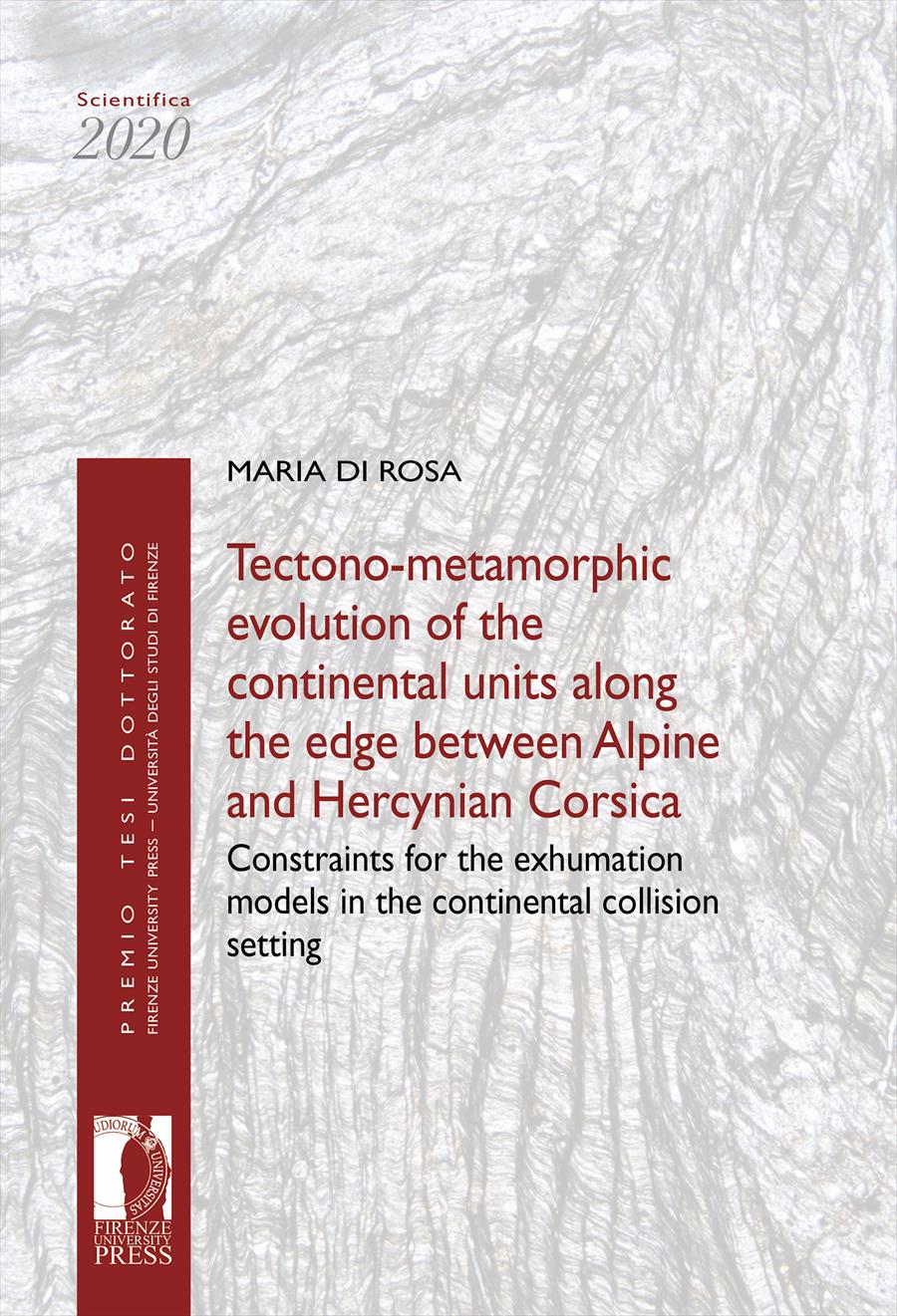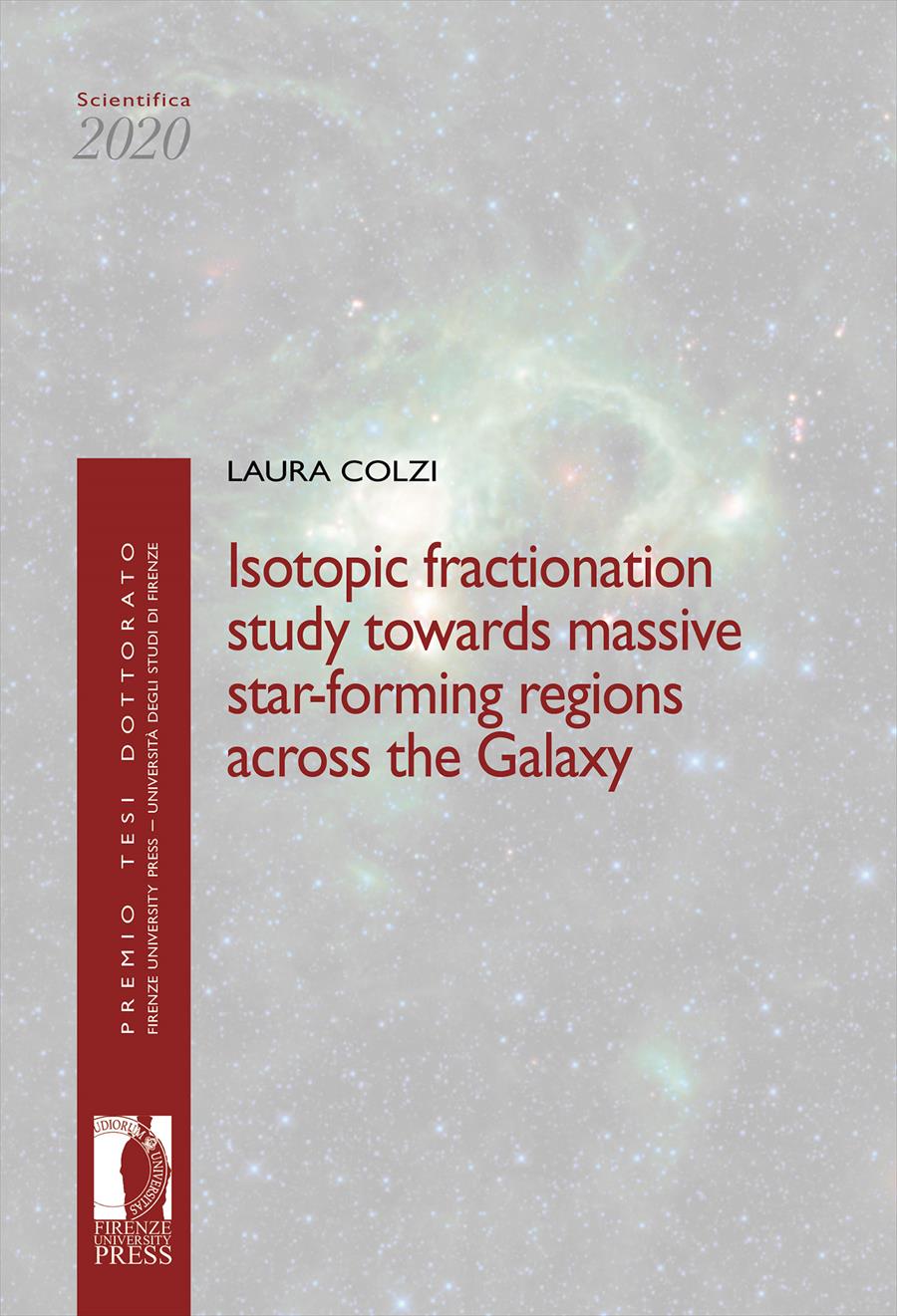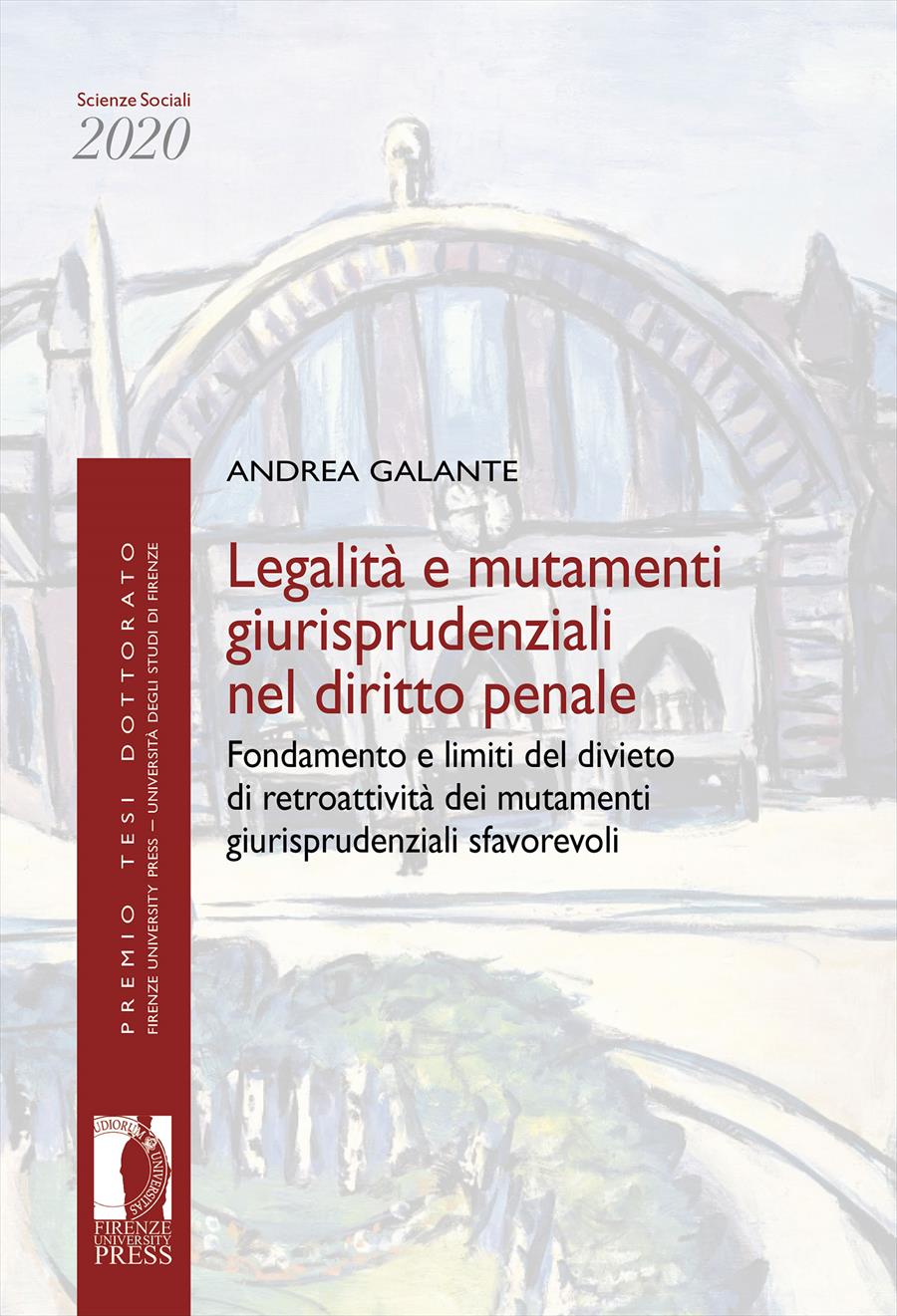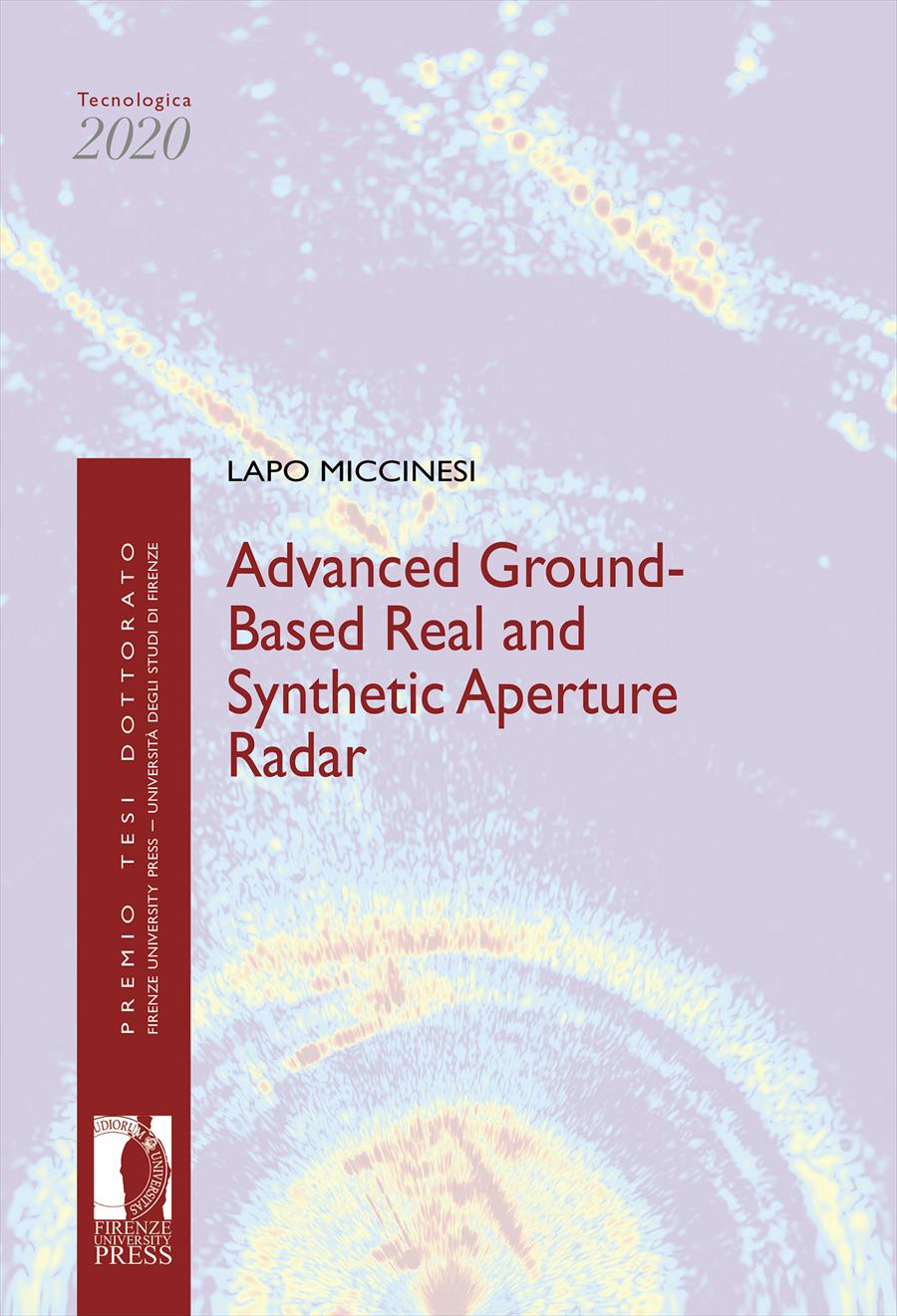Functional validation of genetic variants identified by next generation sequencing in malformations of cortical development
- Dalila De Vita,
Malformations of cortical development (MCDs) result from a disruption in the process of the human brain cortex formation: currently, there are no pharmacological treatments for diffuse MCDs. Next-generation sequencing has accelerated the identification of MCDs causing genes: in some cases, functional studies are needed to clarify the role of genetic variants. The aim of this PhD project has been to apply a multidisciplinary approach to identify causative mutations in patients with MCDs, validate the pathogenic role of the identified mutations, and assess the effectiveness of novel in vitro treatment for mTOR pathway related MCDs.
- Parole chiave:
- MCDs,
- Epilepsy,
- NGS,
- fibroblasts,
- metformin,
- DOI: 10.36253/978-88-5518-344-4
- Collana: Premio Tesi di Dottorato
- Comitato scientifico
- Lingua: Inglese
- Argomento: Medicina
University of Florence, Italy
- Abdollahi MR, Morrison E, Sirey T, Molnar Z, Hayward BE, et al., 2009, Mutation of the variant alpha-tubulin TUBA8 results in polymicrogyria with optic nerve hypoplasia. Am J Hum Genet 85: 737–744.
- Alkuraya FS, Cai X, Emery C, Mochida GH, AlDosari MS, et al., 2011, Human mutations in NDE1 cause extreme microcephaly with lissencephaly [corrected]. Am J Hum Genet 88: 536–547.
- Bahi-Buisson N, Poirier K, Fourniol F, Saillour Y, Valence S, et al., 2014, The wide spectrum of tubulinopathies: what are the key features for the diagnosis? Brain 137: 1676–1700.
- Bahareh Rabbani, Mustafa Tekin and Nejat Mahdieh, 2014, The promise of whole-exome sequencing in medical Genetics, journal of Human Genetics 59, 5–1.
- Barkovich AJ, Kjos BO, 1192, Schizencephaly: correlation of clinical findings with MR characteristics, AJNR Am J Neuroradiol 13: 85–94.
- Barkovich AJ, Lindan CE, 1194, Congenital cytomegalovirus infection of the brain: imaging analysis and embryologic considerations, AJNR Am J Neuroradiol 15: 703–715.
- Barkovich AJ, Guerrini R, Battaglia G, Kalifa G, N’Guyen T, et al., 1994, Band heterotopia: correlation of outcome with magnetic resonance imaging parameters. Ann Neurol 36: 609–617.
- Barkovich AJ, Hevner R, Guerrini R, 1999, Syndromes of bilateral symmetrical polymicrogyria. AJNR Am J Neuroradiol 20: 1814–1821.
- Barkovich AJ, Guerrini R, Kuzniecky RI, Jackson GD, Dobyns WB, 2012, A developmental and genetic classification for malformations of cortical development: update 2012. Brain 135:1348–1369.
- Begoña Martin-Castillo, Alejandro Vazquez-Martin, Cristina Oliveras-Ferraros and Javier A. Menendez, 2010, Metformin and cancer, Cell Cycle 9:6, 1057-1064; March 15; Landes Bioscience.
- Bielschowsky M, 1916, Über Mikrogyrie (in German). J Psychol Neurol 22: 1–47.
- Bilgüvar K, Oztürk AK, Louvi A, Kwan KY, Choi M, et al., 2010, Whole-exome sequencing identifies recessive WDR62 mutations in severe brain malformations. Nature 467: 207–210.
- Blümcke I, Thom M, Aronica E, Armstrong DD, Vinters HV, et al., 2011, The clinicopathologic spectrum of focal cortical dysplasias: a consensus classification proposed by an ad hoc Task Force of the ILAE Diagnostic Methods Commission. Epilepsia 52: 158–174
- Blumcke I, Spreafico R, 2011, An international consensus classification for focal cortical dysplasias. Lancet Neurol 10: 26–27.
- Boycott KM, Flavelle S, Bureau A, Glass HC, Fujiwara TM, et al., 2005, Homozygous deletion of the very low density lipoprotein receptor gene causes autosomal recessive cerebellar hypoplasia with cerebral gyral simplification. Am J Hum Genet 77: 477–483.
- Cappello S, Gray MJ, Badouel C, Lange S, Einsiedler M, et al., 2013, Mutations in genes encoding the cadherin receptor-ligand pair DCHS1 and FAT4 disrupt cerebral cortical development. Nat Genet 45: 1300–1308.
- Caspi, M., Coquelle, F. M., Koifman, C., Levy, T., Arai, H., Aoki, J., Reiner, O., 2003, LIS1 missense mutations. Variable phenotypes result from unpredictable alterations in biochemical and cellular properties. Journal of Biological Chemistry, 278(40),
- Chabu C, Henegariu O, et al., 2014, Mutations in KATNB1 cause complex cerebral malformations by disrupting asymmetrically dividing neural progenitors. Neuron 84: 1226–1239.
- Chang BS, Apse KA, Caraballo R, Cross JH, Mclellan A, et al., 2006, A familial syndrome of unilateral polymicrogyria affecting the right hemisphere. Neurology 66: 133–135 (2006).
- Choo, A. Y., Yoon, S. O., Kim, S. G., Roux, P. P., and Blenis, J., 2008, Rapamycin differentially inhibits S6Ks and 4E-BP1 to mediate cell-typespecific repression of mRNA translation. Proc. Natl. Acad. Sci. U.S.A. 105, 17414–17419.
- Conti V, Carabalona A, Pallesi-Pocachard E, Parrini E, Leventer RJ, et al., 2013, Periventricular heterotopia in 6q terminal deletion syndrome: role of the C6orf70 gene. Brain 136: 3378– 3394.
- Conti V, Pantaleo M, Barba C, Baroni G, Mei D, et al., 2015, Focal dysplasia of the cerebral cortex and infantile spasms associated with somatic 1q21.1-q44 duplication including the AKT3 gene. Clin Genet 88: 241–247.
- Crino PB, 2009, Focal brain malformations: seizures, signaling, sequencing. Epilepsia 50 Suppl 9: 3–8.
- Cushion TD, Dobyns WB, Mullins JG, Stoodley N, Chung SK, et al., 2013, Overlapping cortical malformations and mutations in TUBB2B and TUBA1A. Brain 136: 536–548.
- D’Agostino MD, Bastos A, Piras C, Bernasconi A, Grisar T, et al., 2004, Posterior quadrantic dysplasia or hemiemimegalencephaly: a characteristic brain malformation. Neurology 62: 2214–2220.
- D’Gama AM, Geng Y, Couto JA, Martin B, Boyle EA, et al., 2015, Mammalian target of rapamycin pathway mutations cause hemimegalencephaly and focal cortical dysplasia. Ann Neurol 77: 720–725.
- De Rosa MJ, Secor DL, Barsom M, Fisher RS, Vinters HV, 1992, Neuropathologic findings in surgically treated hemimegalencephaly: immunohistochemical, morphometric, and ultrastructural study. Acta Neuropathol 84: 250–260.
- DeMyer W, 1986, Megalencephaly: types, clinical syndromes, and management. Pediatr Neurol 2: 321–328.
- des Portes V, Francis F, Pinard JM, Desguerre I, Moutard ML, et al., 1998, doublecortin is the major gene causing X-linked subcortical laminar heterotopia (SCLH). Hum Mol Genet 7: 1063–1070.
- Di Resta Chiara, Silvia Galbiati, Paola Carrera and Maurizio Ferrari, 2018, Next-generation sequencing approach for the diagnosis of human diseases: open challenges and new opportunities, EJIFCC.Apr; 29(1): 4–14.
- Dobyns WB, Mirzaa G, Christian SL, Petras K, Roseberry J, et al., 2008, Consistent chromosome abnormalities identify novel polymicrogyria loci in 1p36.3, 2p16.1-p23.1, 4q21.21-q22.1, 6q26-q27, and 21q2. Am J Med Genet A 146A:1637–1654.
- Dobyns WB, Guerrini R, Leventer RL, 2012, Malformations of cortical development, in Swaiman KF, Ashwal S, Ferriero DM, Schor NF (eds): Swaiman’s Pediatric Neurology: Principles and Practice, ed 5, pp 202–231 (Elsevier Saunders, Edinburgh).
- Ehninger et al., 2013, From genes to cognition in tuberous sclerosis: Implications for mTOR inhibitor-based treatment approaches. Neuropharmacology. 68:97-105.
- Evrard P, De saint-georges P, Kadhim HJ, Gadisseux J-F., 1989, Pathology of prenatal encephalopathies. In: French J, editor. Child Neurology and developmental disabilities. Brookes: Baltimore, Paul H.
- Fernández-Marmiesse Ana, Sofía Gouveia and María L. Couce, 2018, NGS Technologies as a Turning Point in Rare Disease Research, Diagnosis and Treatment, Curr Med Chem. Jan; 25(3): 404–432.
- Fox JW, Lamperti ED, Ekşioğlu YZ, Hong SE, Feng Y, et al., 1998, Mutations in filamin 1 prevent migration of cerebral cortical neurons in human periventricular heterotopia. Neuron 21: 1315–1325.
- Gleeson JG, Allen KM, Fox JW, Lamperti ED, Berkovic S, Scheffer I, Cooper EC, Dobyns WB, Minnerath SR, Ross ME, Walsh CA, 1998, Doublecortin, a brain-specific gene mutated in human X-linked lissencephaly and double cortex syndrome, encodes a putative sig
- Guerrini R. e Dobyns WB., 2014, Malformation of cortical development: Clinical features and genetic causes. Lancet Neurol. 13: 710-26.
- Gleeson JG, Minnerath S, Kuzniecky RI, Dobyns WB, Young ID, Ross ME, Walsh CA, 2000b, Somatic and germline mosaic mutations in the doublecortin gene are associated with variable phenotypes. Am J Hum Genet 67: 574–581.
- Golden AJ, Harding BN: Pathology and Genetics, 2012, Developmental Neurophatology (ISN Neuropath Press, Basel).
- Guerreiro MM, Andermann E, Guerrini R, Dobyns WB, Kuzniecky R, et al., 2000, Familial perisylvian polymicrogyria: a new familial syndrome of cortical maldevelopment. Ann Neurol 48: 39–48.
- Guerrini R, Dubeau F, Dulac O, Barkovich AJ, Kuzniecky R, et al., 1997, Bilateral parasagittal parietooccipital polymicrogyria and epilepsy. Ann Neurol 41: 65–73.
- Guerrini R, Moro F, Andermann E, Hughes E, D’Agostino D, et al., 2003, Nonsyndromic mental retardation and cryptogenic epilepsy in women with Doublecortin gene mutations. Ann Neurol 54: 30–37.
- Guerrini R, Mei D, Sisodiya S, Sicca F, Harding B, et al., 2004, Germline and mosaic mutations of FLN1 in men with periventricular heterotopia. Neurology 63: 51–56.
- Guerrini R, Filippi T., 2005, Neuronal migration disorders, genetics, and epileptogenesis. J Child Neurol 20: 287–299.
- Guerrini and Dobyns, 2014 (Barkovich, A.J Kuzniecky, Jackson, G.D Guerrini, Dobyns, W., 2005, A developmental and genetic classification for malformations of cortical development. Neurology, 65(12), pp.1873–1887
- Guerrini R, Dobyns W, Barkovich A., 2008, Abnormal development of the human cerebral cortex: genetics, functional consequences and treatment options. Trends Neurosci 31: 154–162.
- Guerrini R, Barba C: Malformations of cortical development and aberrant cortical networks, 2010, epileptogenesis and functional organization. J Clin Neurophysiol 27: 372–379.
- Guerrini R, Parrini E: Neuronal migration disorders, 2010, Neurobiol Dis 38: 154–166.
- Guerrini R, Mei D, Cordelli DM, Pucatti D, Franzoni E, Parrini E, 2012, Symmetric polymicrogyria and pachygyria associated with TUBB2B gene mutations. Eur J Hum Genet 20: 995–998.
- Guerrini R, Dobyns WB, 2014, Malformations of cortical development: clinical features and genetic causes. Lancet Neurol 13: 710–726.
- Guerrini R, Duchowny M, Jayakar P, Krsek P, Kahane P, et al., 2015, Diagnostic methods and treatment options for focal cortical dysplasia. Epilepsia 56: 1669–1686.
- Gyurus E, Kaposztas Z, Kahan BD, 2011, Sirolimus therapy predisposes to new-onset diabetes mellitus after renal transplantation: a long-term analysis of various treatment regimens, Transplant Proc.;43(5):1583–1592.
- Hara et al., 2002, Raptor, a binding partner of target of rapamycin (TOR), mediates TOR action. Cell; 110: 177–89.
- Hilburger AC, Willis JK, Bouldin E, Henderson- Tilton A, 1993, Familial schizencephaly. Brain Dev 15: 234–236.
- Hirotsune S, Fleck MW, Gambello MJ, Bix GJ, Chen A, et al., 1998, Graded reduction of Pafah1b1 (Lis1) activity results in neuronal migration defects and early embryonic lethality. Nat Genet 19: 333–339.
- Hong SE, Shugart YY, Huang DT, Shahwan SA, Grant PE, et al., 2000, Autosomal recessive lissencephaly with cerebellar hypoplasia is associated with human RELN mutations. Nat Genet 26: 93–96.
- Hudes G et al., 2007, Temsirolimus, interferon alfa, or both for advanced renal-cell carcinoma. N Engl J Med; 356: 2271–81.
- Jaglin XH, Poirier K, Saillour Y, Buhler E, Tian G, et al., 2009, Mutations in the beta-tubulin gene TUBB2B result in asymmetrical polymicrogyria. Nat Genet 41: 746–752.
- Keays DA, Tian G, Poirier K, Huang G J, SieboldC, et al., 2007, Mutations in alpha-tubulin cause abnormal neuronal migration in mice and lissencephaly in humans. Cell 128: 45–57.
- Kheradmand Kia S, Verbeek E, Engelen E, Schot R, Poot RA, et al., 2012, RTTN mutations link primary cilia dunction to organization of the human cerebral cortex. Am J Hum Genet 91:533–540.
- Kielar M, Tuy FP, Bizzotto S, Lebrand C, de Juan Romero C, et al., 2014, Mutations in Eml1 lead to ectopic progenitors and neuronal heterotopia in mouse and human. Nat Neurosci 17: 923–933.
- Kim et al., 2019, Brain somatic mutations in MTOR reveal translational dysregulations underlying intractable focal epilepsy J Clin Invest.
- Korman et al., 2013, Early seizure onset and dysplastic lesion extent independently disrupt cognitive networks.Neurology. 81:745-51.
- Kumar RA, Pilz DT, Babatz TD, Cushion TD, Harvey K, et al., 2010, TUBA1A mutations cause wide spectrum lissencephaly (smooth brain) and suggest that multiple neuronal migration pathways converge on α tubulins. Hum Mol Genet 19: 2817–2827.
- Kuzniecky RI, Andermann F, Guerrini R, 1993, Congenital bilateral perisylvian syndrome: study of 31 patients. The CBPS Multicenter Collaborative Study. Lancet 341: 608–612.
- Lamming et al., 2013, Rapalogs and mTOR inhibitors as anti-aging therapeutics, J Clin Invest.;123(3):980–989.
- Lee JH, Huynh M, Silhavy JL, Kim S, Dixon-Salazar T, et al., 2012, De novo somatic mutations in components of the PI3K-AKT3-mTOR pathway cause hemimegalencephaly. Nat Genet 44: 941–945.
- Lefort C. and M. Kim, 2017, Human T Lymphocyte Isolation, Culture and Analysis of Migration In Vitro, J Vis Exp. 2010; (40).
- Leventer, R. J., Cardoso, C., Ledbetter, D. H., & Dobyns, W. B., 2001, LIS1 missense mutations cause milder lissencephaly phenotypes including a child with normal IQ. Neurology, 57(3), 416–422.
- Leventer RJ, Jansen A, Pilz DT, Stoodley N, Marini C, et al., 2010, Clinical and imaging heterogeneity of polymicrogyria: a study of 328 patients. Brain 133: 1415–1427.
- Lim JS, Kim WI, Kang HC, Kim SH, Park AH, et al., 2015, Brain somatic mutations in MTOR cause focal cortical dysplasia type II leading to intractable epilepsy. Nat Med 21: 395–400.
- Lu J, Tiao G, Folkerth R, Hecht J, Walsh C, Sheen V, 2006, Overlapping expression of ARFGEF2 and Filamin A in the neuroependymal lining of the lateral ventricles: insights into the cause of periventricular heterotopia. J Comp Neurol 494: 476–484.
- Ma XM et al., 2009, Molecular mechanisms of mTOR-mediated translational control. Nat Rev Mol Cell Biol; 10: 30–18.
- Magen D, Ofir A, Berger L, Goldsher D, Eran A, et al., 2015, Autosomal recessive lissencephaly with cerebellar hypoplasia is associated with a loss of-function mutation in CDK5 . Hum Genet 134: 305–314.
- Marsan1 & Stéphanie Baulac, 2018, Mechanistic target of rapamycin (mTOR) pathway, focal cortical dysplasia and epilepsy. Neuropathol Appl Neurobiol, Feb;44(1):6-17.
- Matsumoto N, Leventer RJ, Kuc JA, Mewborn SK, Dudlicek LL, et al., 2001, Mutation analysis of the DCX gene and genotype/phenotype correlation in subcortical band heterotopia. Eur J Hum Genet 9: 5–12.
- Maureen Handoko, Lisa T. Emrick1, Jill A. Rosenfeld, Xia Wang, Alyssa A. Tran, Alicia Turner, John W. Belmont, Brendan H. Lee, Carlos A. Bacino, Hsiao-Tuan Chao, 2018, Recurrent mosaic MTOR c.5930C > T (p.Thr1977Ile) variant causing megalencephaly, asymme
- Mei D, Lewis R, Parrini E, Lazarou LP, Marini C, et al., 2008, High frequency of genomic deletion – and duplication – in the LIS1 gene in lissencephaly: implications for molecular diagnosis. J Med Genet 45: 355–361.
- Mineyko A1, Doja A, Hurteau J, Dobyns WB, Das S, Boycott KM, 2010, A novel missense mutation in LIS1 in a child with subcortical band heterotopia and pachygyria inherited from his mildly affected mother with somatic mosaicism. J Child Neurol. Jun;25(6):73
- Mirzaa GM, Conway RL, Gripp KW, Lerman-Sagie T, Siegel DH, et al., 2012, Megalencephaly-capillary malformation (MCAP) and megalencephaly- polydactyly-polymicrogyria-hydrocephalus (MPPH) syndromes: two closely related disorders of brain overgrowth and abno
- Mirzaa GM, Ashwal S, Dobyns WB, 2012, Disorders of brain size, in Swaiman KF, Ashwal S, Ferriero DF, Schor NF (eds): Swaiman’s Pediatric Neurology: Principles and Practice, ed 5, pp173–201, Elsevier Saunders, Edinburgh.
- Mirzaa GM, Conti V, Timms AE, Smyser CD, Ahmed S, et al., 2015, Characterisation of mutations of the phosphoinositide-3-kinase regulatory subunit, PIK3R2 , in perisylvian polymicrogyria: a next-generation sequencing study. Lancet Neurol 14: 1182–1195.
- Mirzaa et al., 2016, Association of MTOR Mutations With Developmental Brain Disorders, Including Megalencephaly, Focal Cortical Dysplasia, and Pigmentary Mosaicism. JAMA Neurol, Jul 1;73(7):836-845.
- Mishra-Gorur K, Çağlayan AO, Schaffer AE, Chabu C, Henegariu O, et al., 2014, Mutations in KATNB1 cause complex cerebral malformations by disrupting asymmetrically dividing neural progenitors. Neuron 84: 1226–1239.
- Motzer RJ et al., 2008, Efficacy of everolimus in advanced renal cell carcinoma: a double-blind, randomised, placebo-controlled phase III trial. Lancet; 372: 449–56.
- Nellist M, Brouwer RW, Kockx CE, van Veghel-Plandsoen M, Withagen-Hermans C, et al., 2015, Targeted next generation sequencing reveals previously unidentified TSC1 and TSC2 mutations. BMC Med Genet 16: 10.
- Packard AM, Miller VS, Delgado MR, 1997, Schizencephaly: correlations of clinical and radiologic features. Neurology 48: 1427–1434.
- Parrini E, Ramazzotti A, Dobyns WB, Mei D, Moro F, et al., 2006, Periventricular heterotopia: phenotypic heterogeneity and correlation with Filamin A mutations. Brain 129: 1892–1906.
- Parrini E, Conti V, Dobyns W, Guerrini R, 2016, Genetic Basis of Brain Malformations. Mol Syndromol.
- Parrini, E., Marini, C., Mei, D., Galuppi, A., Cellini, E., Pucatti, D., …Sterebova, K, 2017, Diagnostic targeted resequencing in 349 patientswith drug-resistant pediatric epilepsies identifies causative mutationsin 30 different genes. Human Mutation, 38(
- Peterson et al., 2009, DEPTOR is an mTOR inhibitor frequently overexpressed in multiple myeloma cells and required for their survival. Cell, 137: 873–86.
- Piao X, Hill RS, Bodell A, Chang BS, Basel-Vanagaite L, et al., 2004, G protein-coupled receptor-dependent development of human frontal cortex. Science 303: 2033–2036.
- Pisano T, Barkovich AJ, Leventer RJ, Squier W, Scheffer IE, et al., 2012, Peritrigonal and temporooccipital heterotopia with corpus callosum and cerebellar dysgenesis. Neurology 79: 1244–1251.
- Poduri A, Evrony GD, Cai X, Elhosary PC, Beroukhim R, et al., 2012, Somatic activation of AKT3 causes hemispheric developmental brain malformations. Neuron 74: 41–48.
- Poirier K, Lebrun N, Broix L, Tian G, Saillour Y, et al., 2013, Mutations in TUBG1 , DYNC1H1 , KIF5C and KIF2A cause malformations of cortical development and microcephaly. Nat Genet 45: 639–667.
- Ran Marciano, Gabriel Leprivier & Barak Rotblat, 2018, Puromycin labeling does not allow protein synthesis to be measured in energy-starved cells. Cell Death & Disease volume 9, Article number: 39.
- Reiner O, Carrozzo R, Shen Y, Wehnert M, Faustinella F, et al., 1993, Isolation of a Miller-Dieker lissencephaly gene containing G protein betasubunit- like repeats. Nature 364: 717–721.
- Rivière JB, van Bon BW, Hoischen A, Kholmanskikh SS, O’Roak BJ, et al., 2012a, De novo mutations in the actin genes ACTB and ACTG1 cause Baraitser-Winter syndrome. Nat Genet 44: 440–4444, S1–2.
- Rivière JB, Mirzaa GM, O’Roak BJ, Beddaoui M, Alcantara D, et al., 2012b, De novo germline and postzygotic mutations in AKT3 , PIK3R2 and PIK3CA cause a spectrum of related megalencephaly syndromes. Nat Genet 44: 934–940.
- Robert A. Saxton and David M. Sabatin, 2017, mTOR Signaling in Growth, Metabolism, and Disease, Cell. Mar 9; 168(6): 960–976.
- Robin NH, Taylor CJ, McDonald-McGinn DM, Zackai EH, Bingham P, et al., 2006, Polymicrogyria and deletion 22q11.2 syndrome: window to the etiology of a common cortical malformation. Am J Med Genet A 140: 2416–2425.
- Saillour, Y., Carion, N., Quelin, C., Leger, P.-L., Boddaert, N., Elie, C., Bahi-Buisson, N., 2009, LIS1-related isolated lissencephaly: Spectrum of mutations and relationships with malformation severity. Archives of Neurology, 66(8), 1007–1015.
- Salamon N, Andres M, Chute DJ, Nguyen ST,Chang JW, et al., 2006, Contralateral hemimicrencephaly and clinical-pathological correlations in children with hemimegalencephaly. Brain 129: 352–365.
- Santos NF, Secolin R, Brandão-Almeida IL, Silva MS, Torres FR, et al., 2008, A new candidate locus for bilateral perisylvian polymicrogyria mapped on chromosome Xq27. Am J Med Genet A 146A:1151–1157.
- Sapir, T., Elbaum, M., & Reiner, O., 1997, Reduction of microtubule catastrophe events by LIS1, platelet-activating factor acetylhydrolase subunit. The EMBO Journal, 16(23), 6977–6984.
- Sarbassov et al., 2004, Rictor, a novel binding partner of mTOR, defines a rapamycin-insensitive and raptor-independent pathway that regulates the cytoskeleton. Curr Biol; 14: 1296–302.
- Sheen VL, Ganesh VS, Topcu M, Sebire G, Bodell A, et al., 2004, Mutations in ARFGEF2 implicate vesicle trafficking in neural progenitor proliferation and migration in the human cerebral cortex. Nat Genet 36: 69–76.
- Sicca F, Kelemen A, Genton P, Das S, Mei D, et al., 2003, Mosaic mutations of the LIS1 gene cause subcortical band heterotopia. Neurology 61: 1042–1046.
- Sim JC, Scerri T, Fanjul-Fernández M, Riseley JR, Gillies G, et al., 2015, Familial cortical dysplasia caused by mutation in the mTOR regulator NPRL3. Ann Neurol 79: 132–137.
- Tinkle BT, Schorry EK, Franz DN, Crone KR, Saal HM, 2005, Epidemiology of hemimegalencephaly: a case series and review. Am J Med Genet A139: 204–211.
- Verloes A, Di Donato N, Masliah-Planchon J, Jongmans M, Abdul-Raman OA, et al., 2015, Baraitser- Winter cerebrofrontofacial syndrome: delineation of the spectrum in 42 cases. Eur J Hum Genet 23: 292–301.
- Villard L, Nguyen K, Cardoso C, Martin CL, Weiss AM, et al., 2002, A locus for bilateral perisylvian polymicrogyria maps to Xq28. Am J Hum Genet 70: 1003–1008.
- Winder WW, Hardie DG, 1999, The AMP-activated protein kinase, a metabolic master switch: possible roles in type 2 diabetes. Am J Physiol277 : E1–E10.
- Wang D, Zeesman S, Tarnopolsky MA, Nowaczyk MJ, 2013, Duplication of AKT3 as a cause of macrocephaly in duplication 1q43q44. Am J Med Genet A 161: 2016–2019.
- Yang, H., & Wang, K., 2015, Genomic variant annotation and prioritizationwith ANNOVAR and wANNOVAR. Nature Protocols, 10(10), 1556–1566.
- Yakovlev PI, Wadsworth RC, 1946, Schizencephalies; a study of the congenital clefts in the cerebral mantle; clefts with hydrocephalus and lips separated. J Neuropathol Exp Neurol 5: 169– 206.
- Zhou G, Myers R, Li Y et al., 2001, Role of AMP-activated protein kinase in mechanismof metformin action. J Clin Invest; 108: 1167–1174.
- Anno di pubblicazione: 2021
- Pagine: 66
- eISBN: 978-88-5518-344-4
- Licenza d'uso: CC BY 4.0
- © 2021 Author(s)
- Anno di pubblicazione: 2021
- Pagine: 66
- eISBN: 978-88-5518-345-1
- Licenza d'uso: CC BY 4.0
- © 2021 Author(s)
- Anno di pubblicazione: 2021
- Pagine: 66
- ISBN: 978-88-5518-343-7
- Licenza d'uso: CC BY 4.0
- © 2021 Author(s)
Informazioni bibliografiche
Titolo del libro
Functional validation of genetic variants identified by next generation sequencing in malformations of cortical development
Autori
Dalila De Vita
Opera sottoposta a peer review
Numero di pagine
66
Anno di pubblicazione
2021
Copyright
© 2021 Author(s)
Licenza d'uso
Licenza dei metadati
Editore
Firenze University Press
DOI
10.36253/978-88-5518-344-4
ISBN Print
978-88-5518-343-7
eISBN (pdf)
978-88-5518-344-4
eISBN (xml)
978-88-5518-345-1
Collana
Premio Tesi di Dottorato
ISSN della collana
2612-8039
e-ISSN della collana
2612-8020





